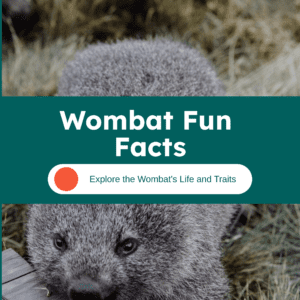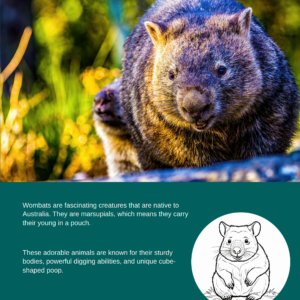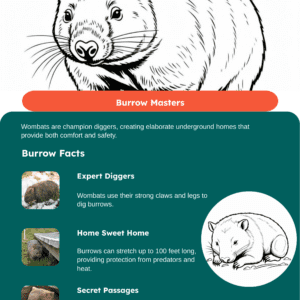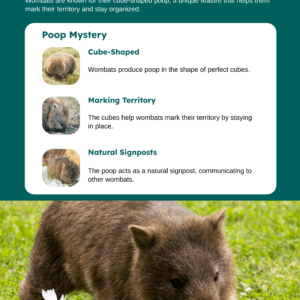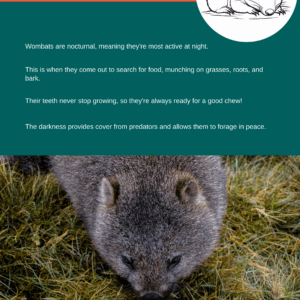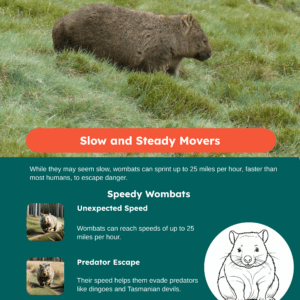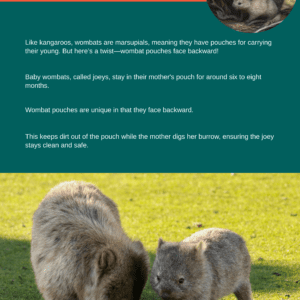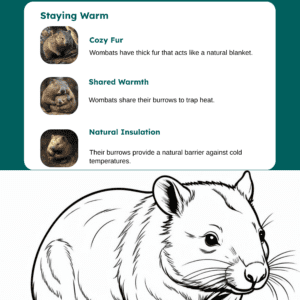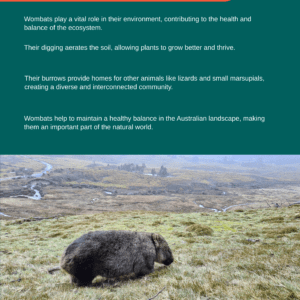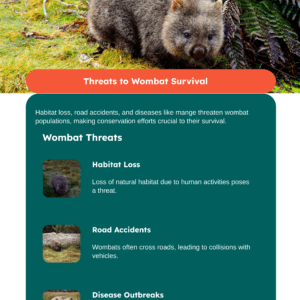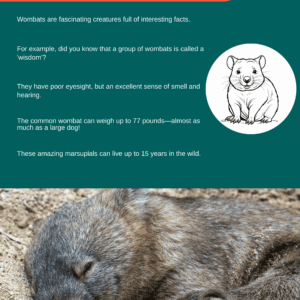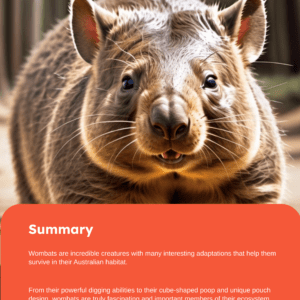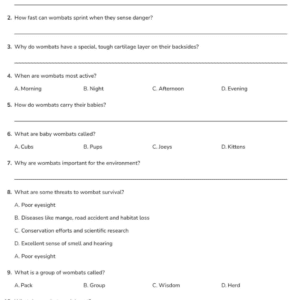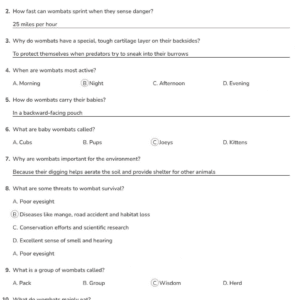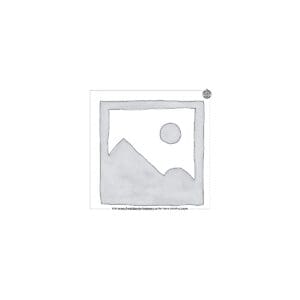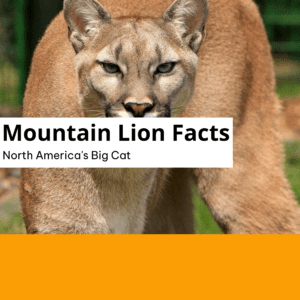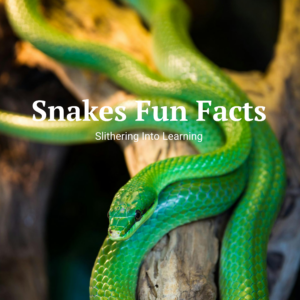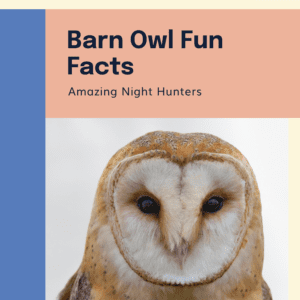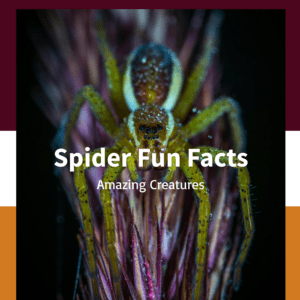Welcome to the Wombat Fun Facts Printable, where we’ll uncover the secret lives of these adorable, burrowing creatures. Wombats may look like giant teddy bears, but they’re full of surprises! Found in Australia, these marsupials are expert diggers, and their quirky traits make them stand out in the animal kingdom. Let’s dig into some amazing facts about these furry earth-movers!
Burrow Masters of the Animal Kingdom
Wombats are champion diggers. They use their powerful claws and sturdy legs to create extensive underground homes called burrows. Some burrows can stretch up to 100 feet long! These cozy tunnels help wombats stay cool during hot days and safe from predators at night. Imagine having a house with secret passages!
Built Like Little Bulldozers
Have you ever wondered why wombats look so stocky? Their short legs and strong bodies make them perfect for bulldozing through soil. Wombats even have a special, tough cartilage layer on their backsides. This “armor” helps protect them when predators try to sneak into their burrows. It’s like having a built-in shield!
The Cube-Shaped Poop Mystery
Yes, you read that right—wombats are famous for their cube-shaped poop! Scientists believe this unusual feature helps the poop stay in place and mark their territory without rolling away. Wombats are territorial animals, and their poop doubles as a natural signpost saying, “This is my spot!”
Nighttime Adventurers
Wombats are nocturnal, which means they are most active at night. Under the cover of darkness, they roam around looking for food. They love munching on grasses, roots, and bark. Their teeth never stop growing, so they’re always ready for a good chew!
Slow and Steady Movers
Wombats might seem a bit slow, but don’t let that fool you. When they sense danger, these marsupials can sprint up to 25 miles per hour for short bursts. That’s faster than most people can run! Their speed helps them escape predators like dingoes and Tasmanian devils.
Baby Wombats in the Pouch
Like kangaroos, wombats are marsupials, which means they carry their babies, called joeys, in a pouch. But here’s a twist—wombat pouches face backward! This unique adaptation keeps dirt from getting into the pouch while the mother digs her burrow. What a clever design!
How Wombats Stay Warm
In the wild, wombats face chilly nights. To stay warm, they rely on their thick fur, which acts like a cozy blanket. They also share their burrows with other wombats to trap heat and stay snug. Teamwork makes the dream work, even in the animal world!
Wombats and Their Ecosystem
Wombats are important for the environment. Their digging helps aerate the soil, which allows plants to grow better. Plus, their burrows provide shelter for other animals like lizards and small marsupials. Wombats are nature’s underground architects!
Threats to Wombat Survival
Sadly, wombats face dangers in the wild. Habitat loss, road accidents, and diseases like mange threaten their populations. Conservation efforts are underway to protect these unique creatures. By learning more through this Wombat Fun Facts Printable, you can help spread awareness about the importance of protecting wombats.
Fun Wombat Trivia!
- The common wombat can weigh up to 77 pounds—almost as much as a large dog!
- Wombats have poor eyesight but an excellent sense of smell and hearing.
- A group of wombats is called a “wisdom.”
- Wombats can live up to 15 years in the wild.
Celebrate the Wombat with Our Printable
The Wombat Fun Facts Printable is the perfect way to learn, share, and celebrate this amazing marsupial. Whether for school projects or fun learning at home, these facts will spark curiosity and bring a smile to your face!
















